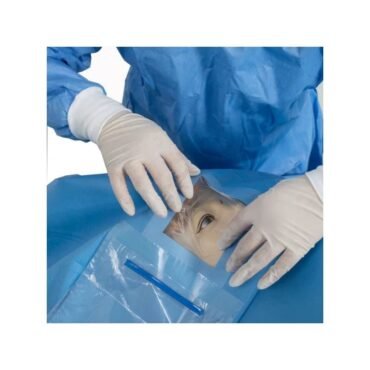Surgical Gown Non Woven SMS Febric Rizochem Phrmaceutical
Trade Name: Miscellaneous Range
Use of Surgical Gown Non Woven?
Surgical Gown Non Woven materials
Keep the surgical area and the surgeon’s clothing or exposed arms separated by a sterile barrier.
fluid repellent and water-resistant.
In the operation room, fight off bacterial infections.
During surgery, a barrier preventing the spread of fluid and bacteria.
The Eight Surgical Gown Non Woven Types?
While all hospital gowns may have a similar fundamental design, not all hospital gowns are created equal; in fact, several varieties of hospital gowns serve entirely distinct functions. Others are made to be worn by patients, while some are intended for use by physicians and nurses. To learn more about the many kinds of hospital gowns, continue reading.
Medical Gowns
- Doctors, nurses, surgeons, and other medical professionals wear these garments to protect themselves from bodily fluids, infections, and germs. The terms surgical gowns, isolation gowns, surgical isolation gowns, non-surgical gowns, procedural gowns, and operating room gowns are just a few that may be used to describe these garments.
- It is appropriate to always choose the appropriate gown because the various gown styles provide varying degrees of protection for low to high risk circumstances. There are three primary categories of medical garb:
- Non-surgical gowns: Medical professionals should wear these multipurpose gowns when there is a low to moderate danger of contamination but they still require additional protection beyond their scrubs.
- They are not worn when there is a higher danger of contamination or during surgical operations. They are constructed of multi-ply material that has typically been coated or treated to offer fluid resistance.
- When a high level of protection is required, wear coveralls (for instance, when working with blood that could transmit hepatitis or HIV). These dresses are made of plastic or another type of water-repellent fabric. These clothes are worn over scrubs or other gowns, as the name implies, to provide additional protection.
Surgical and surgical isolation robes: As their names suggest, these gowns are made for surgery. When there is a little decreased risk of contamination and splashing, surgical gowns are worn during regulated procedures. The front from the chest down and the cuffs up to the elbows receive the majority of the protection. Notwithstanding the remainder of the body, careful detachment pieces of clothing offer additional assurance for the upper chest and arms. They are applied during tasks that have a higher gamble of tainting.
Hospital gowns
For a variety of medical procedures, including routine exams and experimental surgeries, patients also don gowns. These robes are not intended to protect, but rather to make it simple for medical professionals to examine or operate on the patient. Since medical gowns are a standard item of hospital attire for patients, pretty much everyone has had to wear one at some point or another. However, are you familiar with all the many types of hospital gowns? The ones you ought to know about are recorded underneath:
Disposable: These costumes are typically constructed of paper and are intended to be worn only once before being discarded. Even though they cost less to buy than fabric gowns, the expense may mount over time because disposable gowns must be bought more frequently because they cannot be reused.
These dresses are typically constructed of cotton, polyester, or a combination of the two. They can be washed again and used again, reducing waste. Additionally, they are thicker than disposable gowns, which gives them greater coverage and improves their comfort.
We are a Global Wholesaler what’s Also, As an exporter from India, I work with in excess of five nations, including the UAE, Saudi Arabia, Oman, Qatar, and Myanmar. I quickly saw that you were searching for an alternate product brand or click here.







